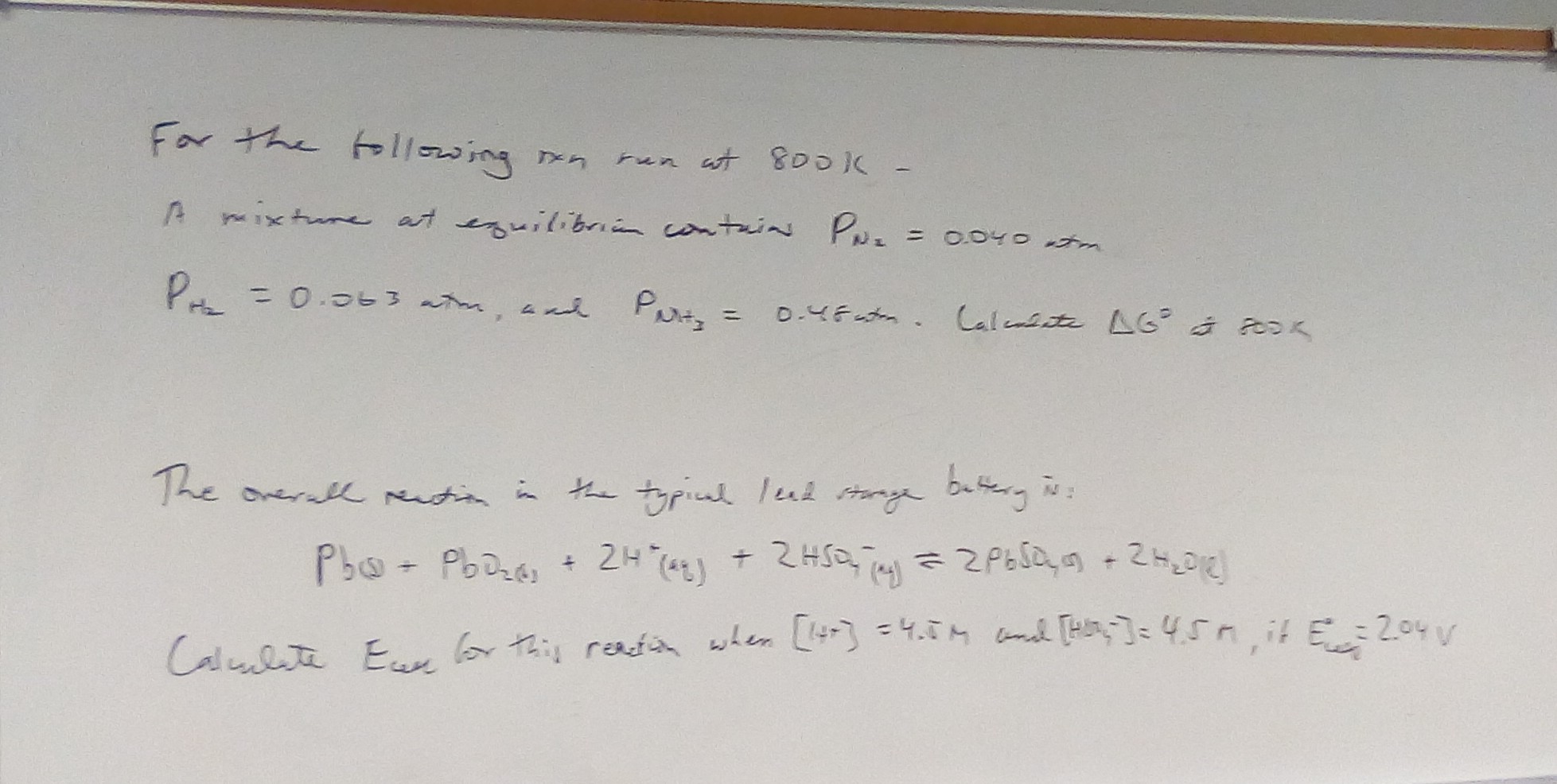For the following reaction run at 800 K, a mixture at equlibrium contains #P_(N_2)=0.0040# atm, #P_(H_2)=0.063# atm, and #P_(NH_3)=0.48# atm. Calculate #\DeltaG^o# at 800 K?
What I have so far: #Q=\frac{(P_(NH_3))^2}{P_(N_2)*(P_(H_2))^3}# from the reaction below
#N_2+3H_2\rightleftharpoons2NH_3#
My #Q# is #\approx230000# (actual value: 230,356.6929)
However, I do not know how to calculate for #\DeltaG^o# . Should I be using the formula #\DeltaG^o=-nFE_(cell)^o# or #\DeltaG^o=-RTlnk# ? I have Q, but this is not a battery so...
(the top question in this picture)

What I have so far:
My
However, I do not know how to calculate for
(the top question in this picture)

1 Answer
Based on the determined equilibrium constant,
You don't need to calculate
#K_P = (P_(NH_3)^2)/(P_(N_2)P_(H_2)^3)#
#= ("0.48 atm"//"1 atm")^2/(("0.0040 atm"//"1 atm")("0.063 atm"//"1 atm")^3)#
#= 2.304 xx 10^5# (FYI, this equilibrium constant makes no physical sense, because this reaction requires excess reactants in the industry to push it forward and it becomes LESS favorable at higher temperatures.
#K_P = 5.38 xx 10^(-6)# at#"823.15 K"# . Thus,#K_P ~~ 10^(-5)# at#"800 K"# .)
For now we'll go with this one... In general,
#DeltaG = DeltaG^@ + RTlnQ# where
#Q# is the reaction quotient, i.e. the NOT-YET-equilibrium constant.#DeltaG# is the change in Gibbs' free energy, and#@# indicates standard conditions (#"1 M"# concentrations,#"1 atm"# surroundings, at a certain temperature).
At equilibrium, recall that
#DeltaG^@ = -RTlnK#
For gas-phase reactions, we define
#DeltaG^@ ("gas-phase") = -RTlnK_P#
Therefore,
#color(red)(DeltaG^@) = -("0.008314 kJ/mol"cdot"K")("800 K")ln(2.304 xx 10^5)#
#= color(red)(-"82.13 kJ/mol")#
In reality, for this reaction at

